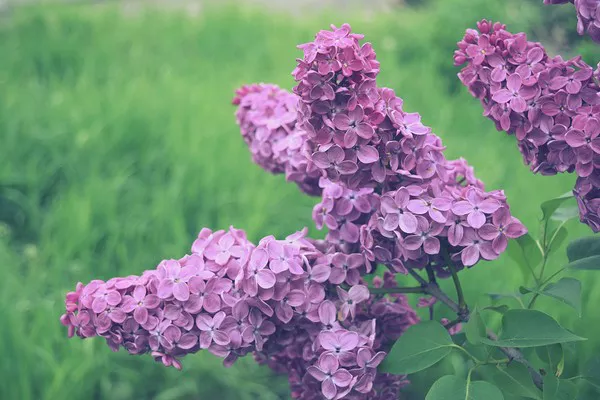Watering is a crucial aspect of caring for flowers, as it directly affects their health, growth, and overall beauty. Knowing when and how much to water can be challenging for both novice and experienced gardeners. In this comprehensive article, we will explore various techniques and signs to help you determine if your flowers need water, and how to ensure optimal plant care and success in your gardening endeavors.
1. Understanding Watering Needs
Watering Frequency
Different flowers have varying water requirements based on factors such as their species, size, location, and weather conditions. Some flowers prefer consistently moist soil, while others tolerate periods of dryness. Understanding the specific needs of your flowers is essential for providing appropriate care.
Avoiding Overwatering
Overwatering can be as detrimental as underwatering. It can lead to root rot, fungal issues, and nutrient leaching. By understanding the signs of overwatering and ensuring proper drainage, you can prevent unnecessary stress on your flowers.
2. Signs that Flowers Need Water
Dry Soil
The most apparent sign that flowers need water is dry soil. Insert your finger about an inch into the soil. If it feels dry to the touch, it’s time to water. However, some flowers prefer to dry out slightly between waterings, so knowing your plant’s preferences is crucial.
Wilting
Wilting is a clear indication that flowers are in need of water. When plants lack sufficient water, their leaves and stems lose turgidity, causing them to droop. In many cases, wilting is reversible with prompt watering.
Yellowing Leaves
Yellowing leaves can be a sign of both underwatering and overwatering. In some cases, it may indicate nutrient deficiencies. By closely monitoring other signs and adjusting your watering practices accordingly, you can address this issue.
3. Methods of Watering
Water at the Base
When watering flowers, it is best to aim for the base of the plant rather than wetting the foliage. Watering at the base helps prevent fungal diseases and ensures that the roots receive the water they need.
Avoiding Water Splashes
Splashing water on the leaves can create a humid environment that fosters fungal growth. Water in the early morning or late afternoon to allow the plants to dry before nightfall.
Deep Watering
For established flowers, deep watering is beneficial as it encourages deep root growth. A thorough soak allows the water to reach the lower root zones, making the plants more resilient during periods of drought.
4. Watering Techniques for Different Types of Flowers
Container Plants
Container plants, whether indoors or outdoors, tend to dry out faster than those in the ground. Regularly check the soil moisture and adjust your watering schedule as needed.
Seedlings and Transplants
Newly planted seedlings and transplants require careful attention to watering. Keep the soil consistently moist until they establish strong root systems.
5. Proper Watering Tools
Watering Can
A watering can with a fine spout is a practical tool for watering flowers gently and accurately. It allows you to direct the water flow at the base of the plants without disturbing the surrounding soil.
Soaker Hoses
Soaker hoses provide a slow and even water distribution, making them ideal for watering flower beds and gardens. They conserve water by reducing evaporation and runoff.
6. Water Conservation Practices
Rainwater Harvesting
Collecting rainwater in a barrel or container is an eco-friendly way to water your flowers. Rainwater is naturally soft and free from the chemicals found in tap water, making it an excellent choice for sensitive plants.
Mulching
Applying mulch around flowers helps retain soil moisture and reduces water evaporation. Organic mulches, such as shredded leaves or wood chips, also add nutrients to the soil as they break down.
7. Time of Day for Watering
Morning Watering
Watering in the early morning is generally the best time, as it allows the plants to absorb moisture before the heat of the day. It also minimizes the risk of fungal diseases, as the foliage has time to dry.
Avoiding Evening Watering
Watering in the evening can lead to prolonged moisture on the leaves, which increases the likelihood of fungal issues. If evening watering is necessary, use a soaker hose or water at the base of the plants.
8. Hydroponic and Drip Irrigation
Hydroponic Systems
In hydroponic gardening, plants grow in nutrient-rich water without the use of soil. Monitoring and maintaining the water’s nutrient levels are essential for the health and growth of the flowers.
Drip Irrigation Systems
Drip irrigation delivers water directly to the plant’s root zone, reducing water wastage and ensuring efficient hydration. It can be an excellent choice for larger flower beds and gardens.
9. Seasonal Watering Considerations
Summer Watering
During hot summer months, flowers may require more frequent watering to cope with higher temperatures and increased evaporation. Mulching and deep watering can help plants withstand heat stress.
Winter Watering
In winter, flowers may require less frequent watering, as growth slows down and evaporation decreases. Be cautious not to overwater, as the cold, wet conditions can lead to root issues.
Conclusion
Proper watering is fundamental to the health and vitality of flowers. By understanding the signs that flowers need water, adopting appropriate watering techniques, and using the right tools, you can ensure your plants receive the optimal hydration they need to thrive. By being attentive to your flowers’ individual needs and making adjustments accordingly, you can cultivate a beautiful and flourishing garden that delights you with an abundance of vibrant blooms throughout the seasons. Additionally, adopting water conservation practices contributes to environmental sustainability and ensures that your gardening efforts remain mindful of ecological responsibility. With these tips and techniques in mind, you can enjoy the beauty and rewards of successful flower care and gardening.


